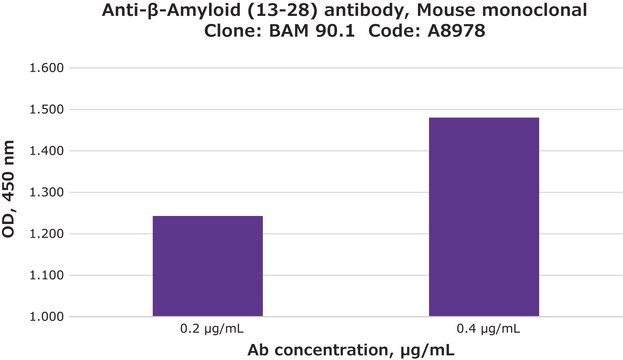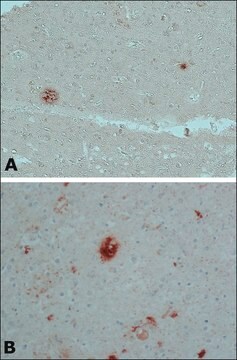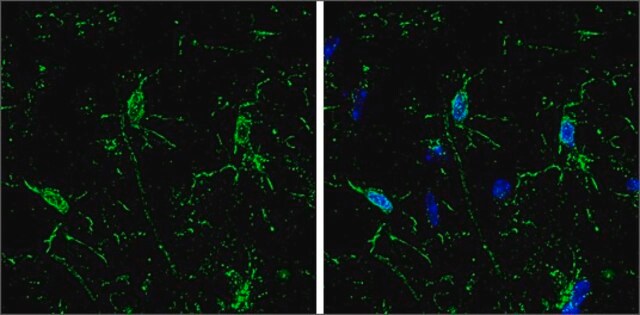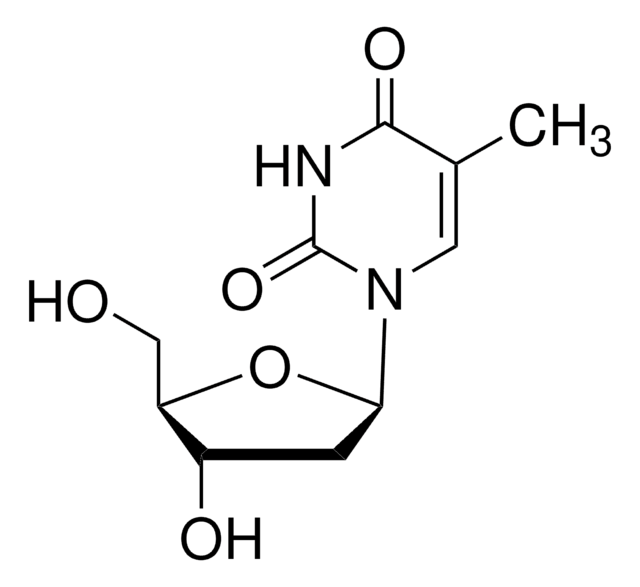A3981
Anti-β-Amyloid antibody, Mouse monoclonal

clone BAM-10, purified from hybridoma cell culture
Synonym(e):
Anti-A-BETA, Anti-Amyloid Beta Precursor Protein
About This Item
Empfohlene Produkte
Biologische Quelle
mouse
Qualitätsniveau
Konjugat
unconjugated
Antikörperform
purified immunoglobulin
Antikörper-Produkttyp
primary antibodies
Klon
BAM-10, monoclonal
Form
buffered aqueous solution
Speziesreaktivität
human
Verpackung
antibody small pack of 25 μL
Erweiterte Validierung
independent
Learn more about Antibody Enhanced Validation
Konzentration
~1.5 mg/mL
Methode(n)
immunohistochemistry (formalin-fixed, paraffin-embedded sections): 2.5-5 μg/mL using formic-acid treated tissue sections of human Alzheimer disease brain tissue
indirect ELISA: suitable
western blot: suitable
Isotyp
IgG1
UniProt-Hinterlegungsnummer
Versandbedingung
dry ice
Lagertemp.
−20°C
Posttranslationale Modifikation Target
unmodified
Suchen Sie nach ähnlichen Produkten? Aufrufen Leitfaden zum Produktvergleich
Allgemeine Beschreibung
Immunogen
Anwendung
Biochem./physiol. Wirkung
Physikalische Form
Haftungsausschluss
Sie haben nicht das passende Produkt gefunden?
Probieren Sie unser Produkt-Auswahlhilfe. aus.
Ähnliches Produkt
Lagerklassenschlüssel
10 - Combustible liquids
WGK
WGK 3
Flammpunkt (°F)
Not applicable
Flammpunkt (°C)
Not applicable
Persönliche Schutzausrüstung
Eyeshields, Gloves, multi-purpose combination respirator cartridge (US)
Analysenzertifikate (COA)
Suchen Sie nach Analysenzertifikate (COA), indem Sie die Lot-/Chargennummer des Produkts eingeben. Lot- und Chargennummern sind auf dem Produktetikett hinter den Wörtern ‘Lot’ oder ‘Batch’ (Lot oder Charge) zu finden.
Besitzen Sie dieses Produkt bereits?
In der Dokumentenbibliothek finden Sie die Dokumentation zu den Produkten, die Sie kürzlich erworben haben.
Kunden haben sich ebenfalls angesehen
Artikel
Alzheimer's disease (AD) is the most common cause of dementia in the elderly and is characterized by gradual loss of cognitive functions.
Unser Team von Wissenschaftlern verfügt über Erfahrung in allen Forschungsbereichen einschließlich Life Science, Materialwissenschaften, chemischer Synthese, Chromatographie, Analytik und vielen mehr..
Setzen Sie sich mit dem technischen Dienst in Verbindung.





![Anti-β−Amyloid [22-35] in Kaninchen hergestellte Antikörper affinity isolated antibody, buffered aqueous solution](/deepweb/assets/sigmaaldrich/product/images/167/133/003c2b30-0f73-4e7e-b498-e4d35df4d55a/640/003c2b30-0f73-4e7e-b498-e4d35df4d55a.jpg)




